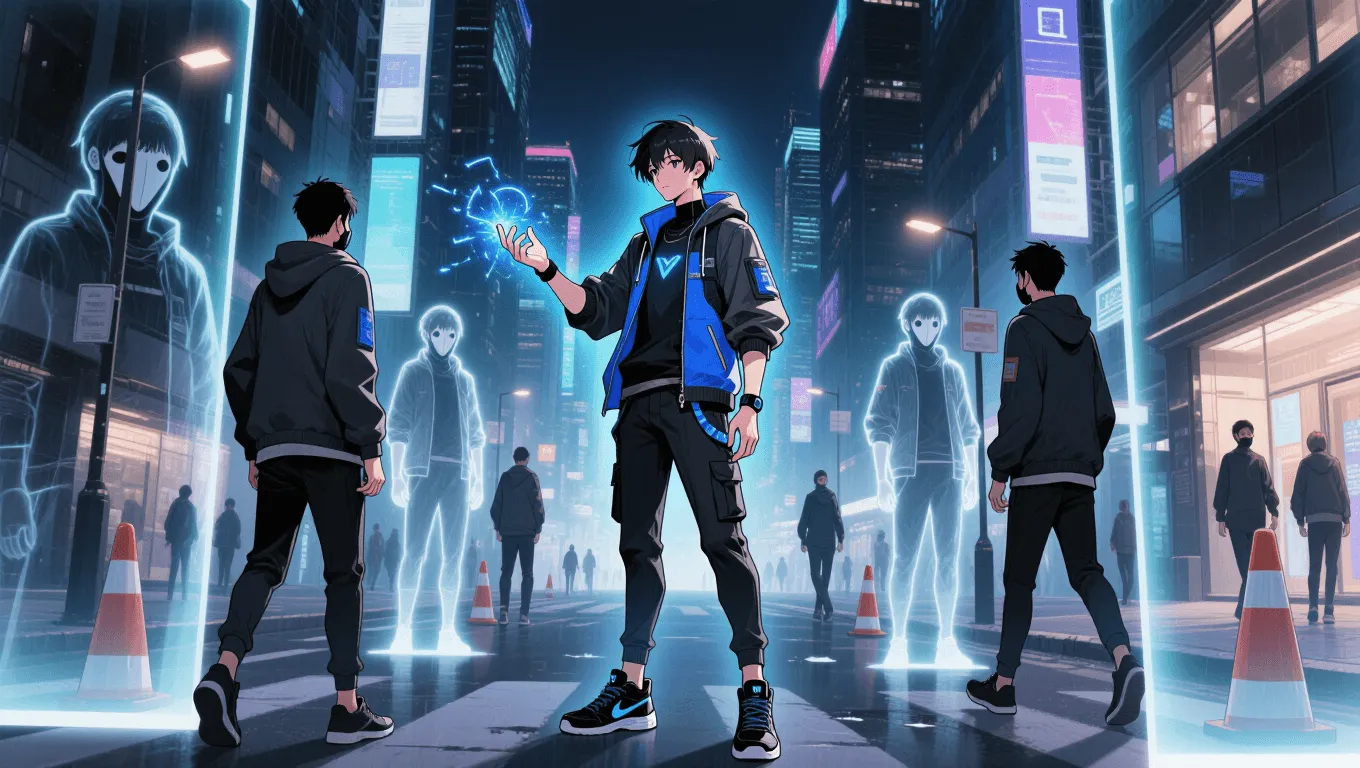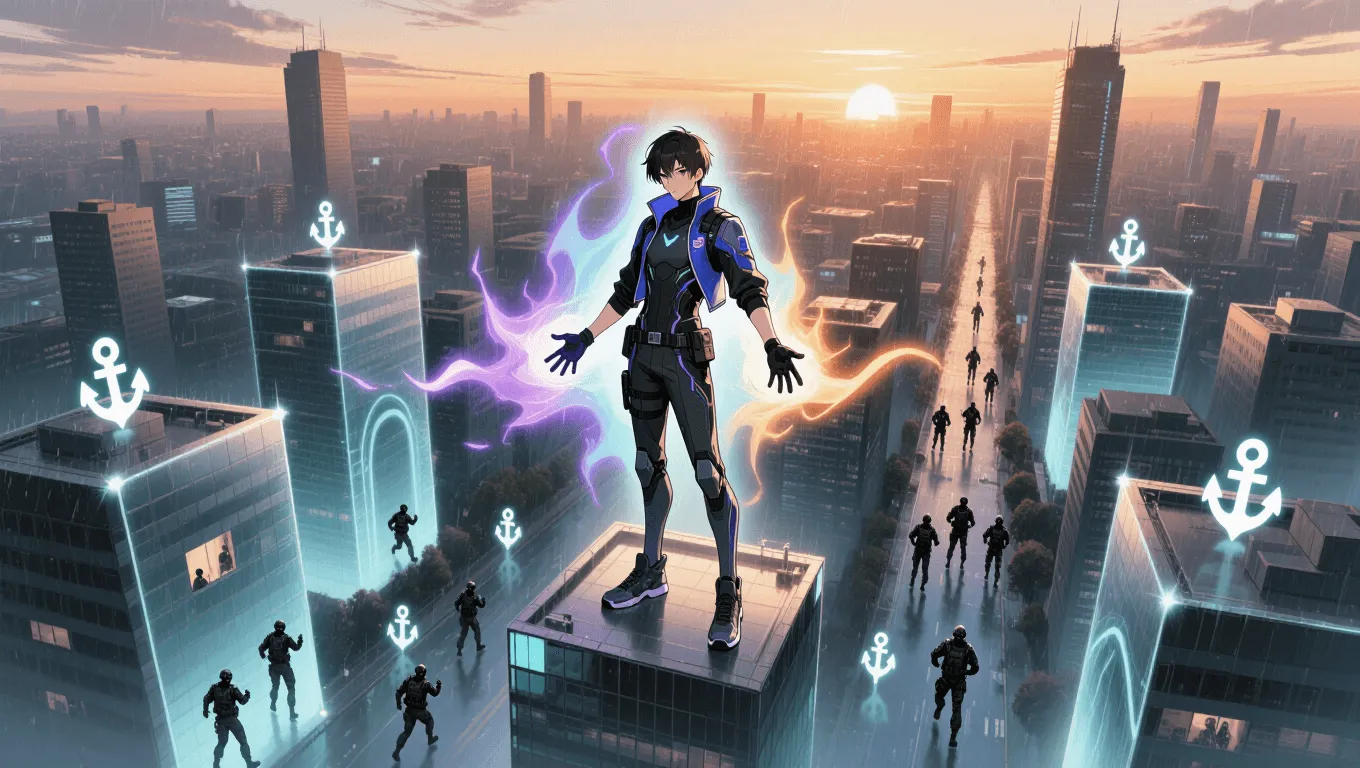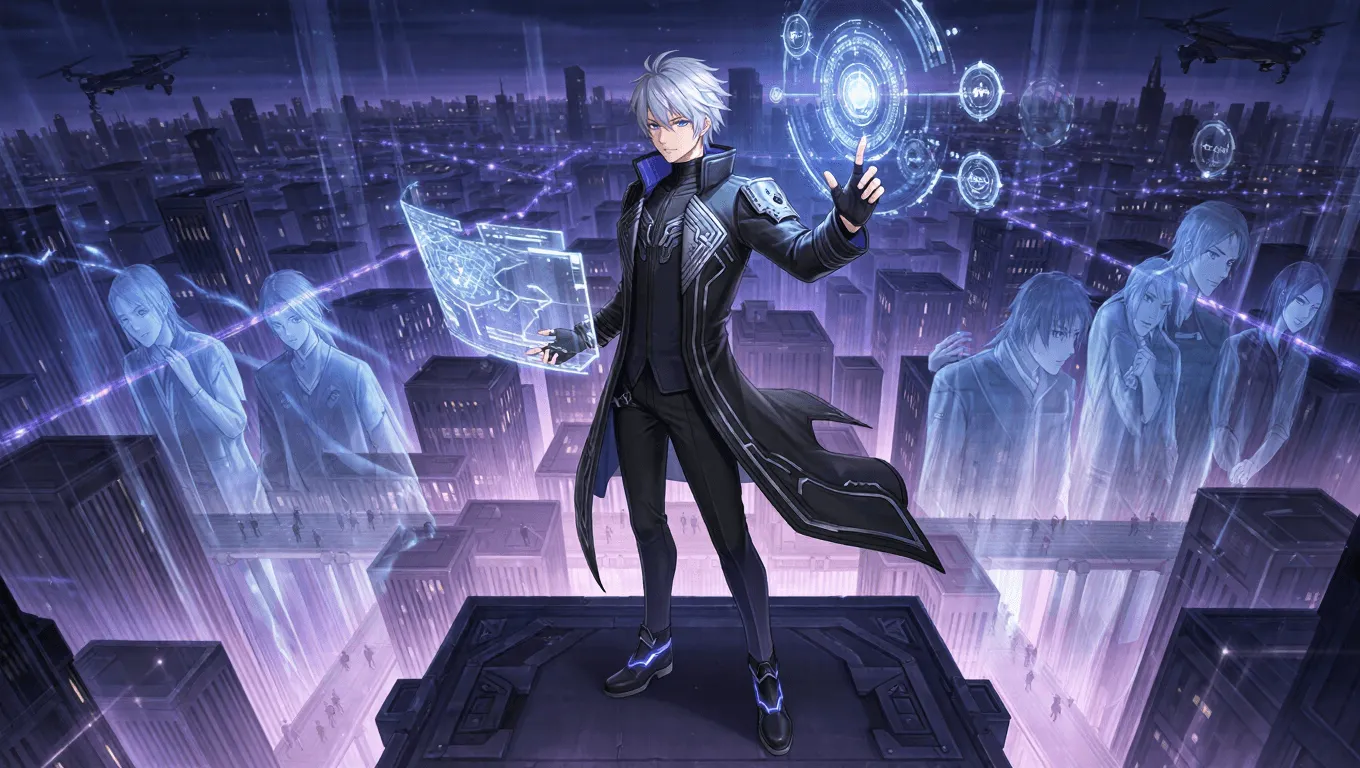Mystic Mirage

Mystic Mirage Video Demo 🎬
Table of Contents
Mystic Mirage is the superpower of crafting convincing illusions that trick one or more senses—sight, sound, touch, and beyond. Wielders bend perception to misdirect foes, cloak allies, and reshape a scene without physically changing it. In easy terms, it is advanced illusion manipulation: creating phantoms, disguises, and false environments so real that targets react as if they were true. This guide breaks down how Mystic Mirage works, what it can do, how it helps in combat, and where its edges show.
Before diving deep, those who want to compare it with other abilities can check the complete list on the superpower wiki or roll for inspiration on the random superpower generator.
What Is Mystic Mirage
Mystic Mirage alters what people perceive without altering the underlying reality. Think of it as a “perception engine.” The user projects sensory signals—light, sound, texture, sometimes even scent—so targets encounter a believable but fabricated scene. Because reactions follow perception, a skilled mirage-caster can influence movement, timing, morale, and choices in a fight or negotiation.
Unlike illusion technology or holograms, the power often ties to the user’s focus and range. Some versions rely on light-bending and sound-sculpting; others lean on subtle psychic camouflage to nudge the brain to fill in gaps. The strongest practitioners harmonize both, producing multi-sensory, high-fidelity fabrications.
Core Abilities of Mystic Mirage
Sensory Illusion Projection
At its heart is sensory deception: false visuals, audio cues, vibrations, temperatures, or textures. The more senses covered, the more convincing the mirage. Advanced users synchronize multiple channels so footsteps make sound, doors “feel” solid, and distant fires “radiate” heat cues.
Glamour and Disguise
A classic use is glamour casting—masking appearance, clothing, or even voice to impersonate someone else. Psychic camouflage can blur identifiable features, while light-bending hides telltale outlines. This is ideal for infiltration or to shield VIPs in plain sight.
Phantom Decoys and Afterimages
Illusory duplicates split attention and bait attacks. Decoys can simulate motion trails, delayed echoes, or blurred afterimages that cause opponents to swing at air, waste ammunition, or reveal their positions.
Terrain Reskinning
Users can re-skin the battlefield: turn a warehouse into a “forest,” shift apparent walls, or create illusory cover. Terrain illusions redirect enemy paths, funnel squads, and manufacture tactical choke points without moving a single brick.
Mirage Field Cloaking
A localized mirage field masks a person or object, creating blind spots. This cloaking can match surrounding patterns (visual camouflage) and dampen telltale clinks or footfalls (sound distortion) to erase presence in a patrol’s sweep.
Hallucination Induction (Non-Invasive)
Some versions gently prime the brain to accept the illusion. It’s not mind control; it’s suggestive framing that reduces skepticism so targets lean into what they “see.” This makes simpler illusions feel heavier and persistent.
Illusory Construct “Feel”
High-tier casters can mimic tactile feedback. A conjured “railing” seems to meet a hand; a “puddle” splashes just enough to convince the mind. While not physically solid, the expectation of touch creates believable resistance cues.
Anti-Surveillance Misdirection
Mystic Mirage can spoof cameras, drones, or guards by projecting alternate footage or by obscuring key frames with ghostly noise. Combined with light-bending, it becomes powerful counter-recon.
Crowd Control Theater
Confusing lights, false walls, and phantom hazards shepherd crowds to exits or stall hostile waves. A “closing wall” that isn’t real still buys precious seconds while allies reposition.
Application / Tactical Advantages in Combat
Infiltration and Escape
Illusory disguises bypass checkpoints. When discovered, a drop-and-switch—deploying decoys in multiple directions—creates instant chaos. Emergency exits can be masked for allies while enemies chase phantom footsteps.
Ambush Engineering
Re-skin the ground to hide tripwires or make open terrain “look” mined. Mirage cover lets a team cross exposed areas safely as enemies hesitate. A false “gap” in a perimeter draws opponents into a prepared crossfire.
Damage Mitigation by Misdirection
For ranged combat, decoys soak aim and ammo. For melee, false steps and shifting silhouettes cause over-commits and whiffs. Even a half-second of uncertainty can flip an exchange.
Psychological Edge
Believing a room is on fire or a creature lurks overhead degrades morale. Subtle sound loops heighten anxiety, making foes less coordinated. Meanwhile, projected banners, heroic silhouettes, or rallying signals raise allied confidence.
Anti-Recon and Information Warfare
Sending patrols on wild goose chases, hiding critical assets, and spoofing thermal outlines (when the user can mimic heat signatures) complicate enemy intel. A commander who doubts their sensors loses tempo.
Ally Buff: Communication and Concealment
Mirages can broadcast clear visual cues to allies—arrows, timing markers, silent countdowns—while masking those signals from opponents. Groups synchronize without radio chatter.
Level: Level 1 🏙️, Level 2 🌇, Level 3 🌃
Level 1 🏙️ — Street-Ready Illusionist

-
Range & Scale: Room-sized scenes or single-target glamours within line-of-sight.
-
Fidelity: Strong visuals, basic audio; limited tactile or thermal mimicry.
-
Tactics: Simple decoys, disguise for quick passes, masking doorways in a pinch.
-
Training Goals: Learn perspective, shadow direction, lip-sync, and environmental consistency (e.g., reflections). Build stamina to hold a scene for 30–60 seconds under stress.
Level 2 🌇 — Urban-Scale Mirage Crafter

-
Range & Scale: Building floors or city blocks with concentration and anchor points.
-
Fidelity: Multi-sensory packages—coordinated soundscapes, footfall echoes, light-bending for cloaks.
-
Tactics: Terrain reskins to steer squads, synchronized decoy barrages, seamless identity shifts.
-
Training Goals: Maintain illusions while moving; layer multiple illusions for different audiences (guards see one thing, cameras another). Extend duration to several minutes.
Level 3 🌃 — Night-Dominion Phantom Architect

-
Range & Scale: Multi-block or campus-sized overlays; targeted illusions across separate vantage points.
-
Fidelity: High realism, nuanced tactile cues, selective thermal and EM spoofing depending on the variant.
-
Tactics: Citywide misdirection operations, anti-drone deception corridors, and deep cloaking of teams or convoys.
-
Training Goals: Operate under counter-illusion pressure; split attention among multiple synchronized theaters; integrate with allied telepaths, photokinetics, or sound shapers.
Limitations of Using the Mystic Mirage
Cognitive Load and Focus
Large, detailed illusions tax concentration. Multitasking across targets or senses increases error risk. Fatigue manifests as flicker, audio desync, or repeating patterns that trained observers spot.
Line-of-Sight, Anchors, and Occlusion
Many users need either line-of-sight or environmental anchors (mirrors, dust, ambient light, reflectors) to ground the mirage. Complexity drops in darkness without light to bend—unless the user can generate their own.
Sensory Mismatch
If smell doesn’t match the “ocean scene,” or footsteps don’t produce echoes, suspicion rises. Multi-sensory coherence matters. The more senses an illusion covers, the more convincing—but the higher the cost.
Recording Devices and Non-Visual Sensors
Cameras with thermal, radar, or lidar can see through superficial visuals. Advanced Mirage users spoof multiple bands, but doing so consumes bandwidth and shortens range. Unspoofed sensors will expose discrepancies.
Duration and Drift
Holding a large-scale scene for long periods risks drift: shadows misalign with the real sun, rain doesn’t wet the ground, or reflections lag. Regular resets or adaptive scripts help but also signal that something’s off.
Ethical and Strategic Boundaries
Misuse can inflict psychological harm or erode ally trust. Smart teams establish rules of engagement—no traumatic imagery, clear safewords, and after-action debriefs when mirage effects were intense.
Weakness Against What Other Superpowers
True Sight and Clairvoyance
True Sight ignores surface-level deception, reading reality’s “metadata.” Clairvoyants who scan beyond the light-and-sound layer can tag illusions instantly.
Telepathy and Empathy
Telepaths detect incongruence in the caster’s focus or in witnesses’ spike of confusion. Empaths note collective fear or doubt, flagging a false scene even if they can’t see through it.
Technopathy and AI-Assisted Sensing
Technopaths sync drones, lidar, and thermal arrays to map real geometry, revealing ghosts. AI-enhanced pattern analysis spots looped audio or pixel artifacts.
Echolocation and Vibration Sense
If walls don’t echo correctly or “solid” objects lack proper resonance, sonic or vibration-based senses punch through the mirage.
Precognition and Probability Sense
Futuresense often flags outcomes inconsistent with the illusion, letting a seer move as if the deception isn’t there. Probability shapers force coin-flip moments to break in their favor, undercutting misdirection.
Elemental and Area-of-Effect Powers
Wide floods, shockwaves, or debris fields don’t care what the eye sees. When the environment physically moves, illusions must keep up perfectly or collapse.
Synergistic Power Combos
Photokinesis and Light-Bending
Pairing with light manipulation boosts fidelity—accurate shadows, reflection control, and realistic refraction. Together, they deliver cinema-grade environmental overlays.
Sonokinesis and Sound Sculpting
Dialing in spatial audio makes corridors “stretch” convincingly and footsteps “land” where decoys should be. Perfect for ambush choreography.
Telepathy (Supportive)
A light touch nudges skepticism down, making simpler illusions work longer. Ethical teams use consent-based telepathic smoothing for training or crowd safety management.
Stealth and Shadowcraft
While stealth reduces signature, Mystic Mirage removes attention altogether. Shadowcrafters hide in darkness made “deeper,” while mirage cloaks erase the rest.
Holography and Hard-Light
If available, hard-light underlays supply real collision for key props (doors, rails), while Mirage supplies the skin, doubling believability.
Speedsters and Agile Strikers
Fast allies exploit the half-second pauses illusions create. Phantom duplicates pull attention while a speedster lands decisive strikes.
Known Users
-
Stage-Hand (original character): A covert operative who projects believable backstage “sets” to seed exits and cover for evac teams during crises.
-
Glass Lantern (original character): A vigilante artist who paints city blocks in living light, steering gangs into police safe corridors.
-
Mysterio (Marvel Comics): A master of special effects and illusions whose theatrics demonstrate many facets of deception-based combat. Learn more about Mysterio.
-
Zatanna (DC Comics): A sorcerer who often employs glamour, misdirection, and showmanship to outmaneuver foes. See Zatanna.
-
Loki (Marvel Comics): Noted for trickery and projected doubles that echo high-level mirage tactics. Explore Loki.
For more abilities that complement or counter illusion manipulation, browse the full superpower wiki list or spark a fresh idea with the random superpower generator.
